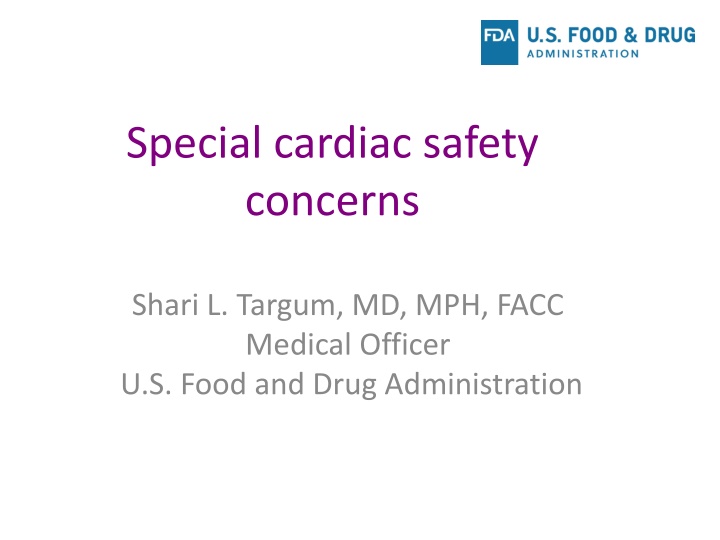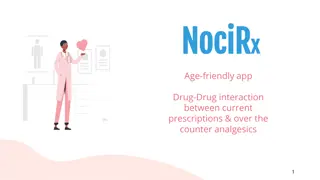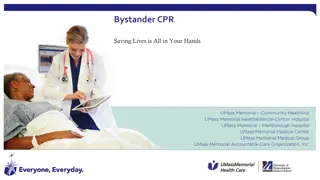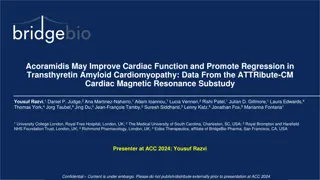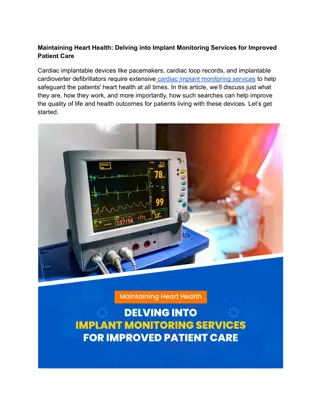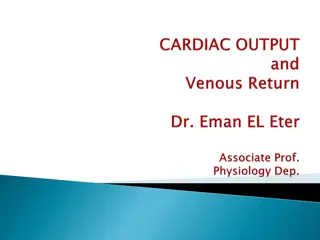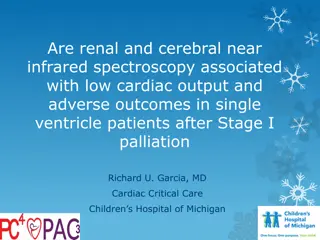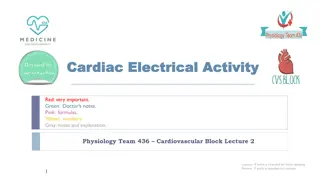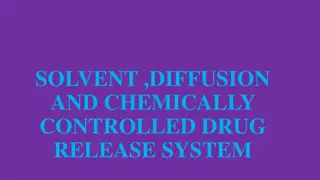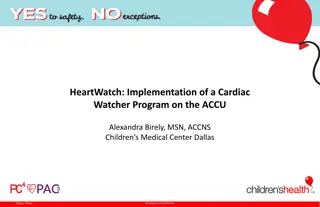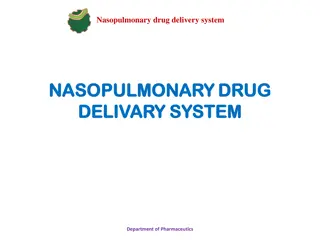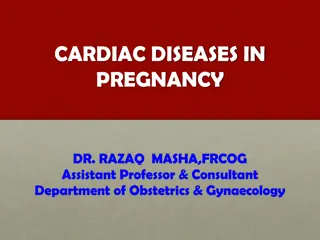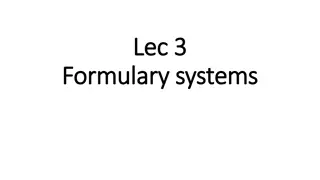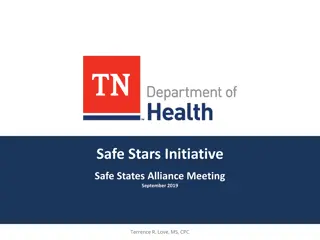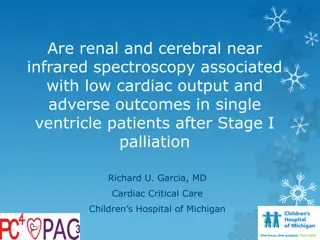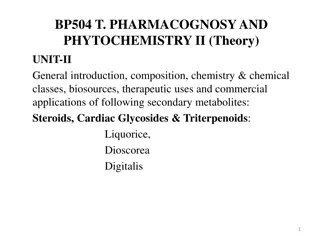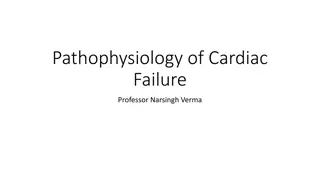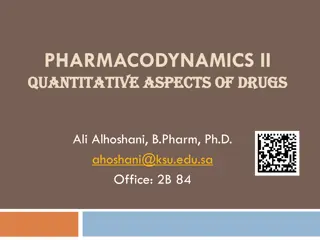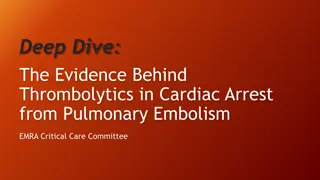Cardiac Safety Concerns in Drug Development
Detecting cardiac safety signals is crucial in drug development to assess potential risks of QT prolongation, arrhythmias, and Torsade de Pointes. Learn about evaluating TdP risk, background drug withdrawals, and using QT studies as safety biomarkers.
Download Presentation

Please find below an Image/Link to download the presentation.
The content on the website is provided AS IS for your information and personal use only. It may not be sold, licensed, or shared on other websites without obtaining consent from the author.If you encounter any issues during the download, it is possible that the publisher has removed the file from their server.
You are allowed to download the files provided on this website for personal or commercial use, subject to the condition that they are used lawfully. All files are the property of their respective owners.
The content on the website is provided AS IS for your information and personal use only. It may not be sold, licensed, or shared on other websites without obtaining consent from the author.
E N D
Presentation Transcript
Special cardiac safety concerns Shari L. Targum, MD, MPH, FACC Medical Officer U.S. Food and Drug Administration
Detecting cardiac safety signals Common, drug-related: can detect in placebo-controlled, clinical trials, compare to background rate Rare, severe, drug-related: sometimes detected in clinical trials (e.g., Stevens-Johnson) or via risk biomarkers (e.g., QT prolongation) or epidemiologic studies (e.g., case-control) Spontaneous events rate with drug: single event usually not interpretable; detect via large enough controlled trial compare to background rate epidemiologic study (large hazard ratio) 2
QT interval Variable-- heart rate, autonomic tone, time of day Can be prolonged due to: heart disease (e.g., congestive heart failure) electrolyte abnormalities (e.g., hypokalemia) drugs (e.g., quinidine). 5
Torsade de pointes (TdP) File:Torsades converted by AICD ECG strip Lead II.JPG Rare, but life-threatening. Might not be detected in a drug development program. 6
Background Drug withdrawals due to QT risk for non- antiarrhythmic drugs (e.g., cisapride, terfenadine) How to evaluate TdP risk in drug development (e.g., prior to marketing)? 7
QT as a safety biomarker: Era of the Thorough QT (TQT) study Threshold for potential clinical importance set very low (10 msec) Negative study routine phase 3 monitoring Failure to rule out 10 msec heightened phase 3 monitoring 8
QT Study Characteristics Characterize QT effects of the drug under near worst case scenario Exposure at supratherapeutic concentrations ECG sampling at peak concentrations (drug/metabolites) Sufficient duration of dosing/sampling to characterize effects 9
Some concerns about QT studies TQT studies difficult and expensive QTc relationship to risk (arrhythmia) not constant Unknown public health consequences of compounds removed from pharmaceutical pipeline Interest in alternative approaches to assess proarrhythmic risk. 10
SCIPA (Comprehensive In Vitro Proarrhythmia Assay) Initiative 1. in vitro drug effects, multiple cardiac channels + in silico reconstruction of electrical effects; 2. confirmation using human stem cell-derived cardiomyocytes. Undergoing validation at this time. 11
Appetite suppressants Fenfluramine (1973): approved for short-term use racemic mixture*- increased serotonin, associated with depression Dexfenfluramine (1996)* thought to be safer Fen-Phen: never approved, widely used off- label for long-term management *withdrawn in 1997 14
Case-control study in Europe: odds ratio 23.1 associated with use > 3 months.
24 women, no prior heart disease, mean treatment duration 11 months. Fenfluramine and dexfenfluramine voluntarily withdrawn on Sept. 15, 1997
Cardiovascular risk and diabetes drugs Diabetes drugs approved based on glycemic control (hemoglobin A1c) Diabetics have increased cardiovascular risk Concerns that some medications increase cardiovascular risk (and little information) Need to show that treatment doesn t result in unacceptable risk (e.g., non-inferiority) 19
Cardiovascular (CV) risk and diabetes drugs Guidance evaluating cardiovascular risk in new antidiabetic therapies to treat type 2 diabetes (2008) Design Phase 2/3 trials to allow meta-analysis Blinded CV endpoint adjudication committee Include higher risk patients (e.g., elderly, renal impairment) Prespecified upper bound May need adequately powered cardiovascular outcome study. 20
Defining acceptable cardiac risk and diabetes drugs Acceptable and unacceptable cardiovascular risk awith a reassuring point estimate Upper bound of 95% confidence interval for risk ratio or hazard ratio Conclusion >1.8 Inadequate to support approval Postmarketing cardiovascular trial(s) needed to show definitively <1.3 >1.3 but <1.8a Postmarketing cardiovascular trial(s) generally not necessary <1.3a 21
Detecting cardiac safety signals Common, drug-related: detect in placebo- controlled, clinical trials of appropriate duration Rare, severe, drug-related: detect via risk biomarkers (e.g., QT prolongation) epidemiologic studies (e.g., valvulopathy) Spontaneous events rate with drug: single event usually notinterpretable; detect via large enough controlled trial Meta-analysis (e.g., diabetes drugs)
Cardio-Oncology Several oncology drugs associated with cardiac toxicity (e.g., anthracyclines, trastuzumab, tyrosine kinase inhibitors) Interest in assessing and mitigating drug/radiation-induced cardiovascular risk New interest group (American College of Cardiology), journal (Cardio-Oncology),recent FDA public workshop (22 September 2016) 24
Cardiac Safety Research Consortium Launched in 2006 through an FDA Critical Path Initiative Memorandum of Understanding with Duke University to support research into the evaluation of cardiac safety of medical products. Industry-academia-government effort Think tanks, research projects, publications Further information: cardiac-safety.org 25
